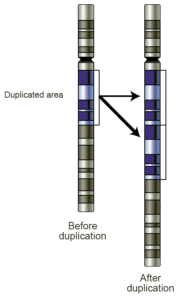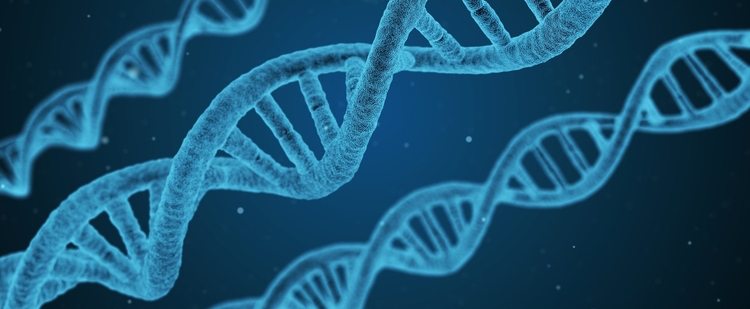The genetic basis of cerebral palsy may be stronger than once believed, according to new research published in the journal Genetics In Medicine. Studying genetic code from a group of 97 people with hemiplegic cerebral palsy, a team from the Hospital for Sick Children in Toronto has found that nearly 25% of the patients displayed genetic mutations in critical developmental genes.
What Are Copy-Number Variations?
In a previous study, the Canadian researchers discovered that the genetic makeup from nearly 10% of children with any form of cerebral palsy may display important copy-number variations – portions of repeated genetic code – that could help explain their condition.

Copy-number variations, or CNV, are physical changes in the way a person’s genetic code is structured. Snippets of the code can be deleted, inserted or duplicated, changing the architecture of genes as they sit on chromosomes. Specifically, the term “copy-number variation” refers to a snippet of genetic code that appears in different numbers across individuals.
To the right, we can see one example of a copy-number variation, in which a snippet of code has been duplicated.
Copy-number variations account for much of the genetic variation that we observe between individuals. Most researchers agree that around 99.5% of the human gene code is shared between all people, but copy-number variations create a surprising array of variation by altering the organization of genetic code. In short, the genes that make up the human constitution don’t vary much, but their arrangement on the chromosome does.
Genetic Mutations As A Cause Of Disease
As it turns out, copy-order variations unique to an individual can have big effects on the way that person develops. Some CNV result in medical disorders. For example, a specific mutation to the Huntingtin gene, in which a short span of genetic code is repeated three times in a row, causes Huntington’s disease, an inherited neurological disease.
Before continuing further, we should stress another point. Copy-number variations can be either inherited or de novo:
- inherited – mutations contained in sex cells (gametes) and thus passed from parent to child
- de novo – mutations that begin in a specific individual, as cells duplicate and copy their genetic codes
In addition to the Huntingtin gene, researchers have identified a number of genes that are critical during fetal development, but often result in developmental disorders when they are altered in some way. Do some of these genetic mutations play a part in causing cerebral palsy disorders?
Mutations May Be Risk Factor For Cerebral Palsy
To answer that question, researchers at Toronto’s Hospital for Sick Children analyzed the genotypes of 97 unrelated people with hemiplegic forms of cerebral palsy, which affect only the muscles on one side of the body. The answer? A tentative “yes.”
A significant minority of the cerebral palsy patients displayed copy-number variations in critical developmental genes, including ones that have already linked to other neuro-developmental conditions. In total, nearly 25% of the children exhibited genetic abnormalities that affected developmental genes or have previously been linked to genetic disorders.
- 7.2% of patients had de novo (new) copy-number variations and / or mutations on sex chromosomes in genes that are important for fetal development
- 18.6% of patients had rare inherited copy-number variations that have been associated to genetic disorders and / or neuro-developmental disorders
These numbers are significant, the researchers write, but can’t explain cerebral palsy entirely. As we’ve seen, suspect genetic mutations could not be found in over 75% of the people with cerebral palsy. At least in this patient population, the genetic factors chosen for study don’t seem to have any causal role for the majority of patients. Hundreds of other factors could also be in play. It’s long been known, for example, that between 10% and 20% of cerebral palsy disorders are caused by birth asphyxia, when a child suffers oxygen deprivation during labor or delivery.
Interpreting The Data
Even so, the results are highly suggestive. Copy-number variations were more frequent in females than males. Within the general population, however, male children are more likely to be diagnosed with cerebral palsy overall. To explain this variance, the researchers propose that CNV may be an independent risk factor for cerebral palsy, accounting, at least in part, for the higher proportion of female patients with copy-number variations.

A similar trend was seen in children who were delivered prematurely. Prematurity is an extraordinarily-strong risk factor for cerebral palsy, increasing the risk by up to 100 times. In the study’s sample population, though, children who were born prematurely were less likely to exhibit significant genetic mutations. In other words, the presence of a CNV appeared to boost the likelihood that a child without other risk factors would develop hemiplegic cerebral palsy.
Should Genetic Tests Play A Role In Diagnosis?
Suggestive results, of course, are not conclusive, but the researchers considered their findings illuminating enough to suggest that genetic testing may pose significant benefits for the diagnosis of cerebral palsy disorders. Testing of this sort may be especially important because many children with dystonia and hereditary spastic paraplegia, two movement disorders caused by known genetic mutations, can be misdiagnosed as forms of cerebral palsy. Obviously, getting a diagnosis wrong can be a big deal, since these conditions are treated in very different ways.


